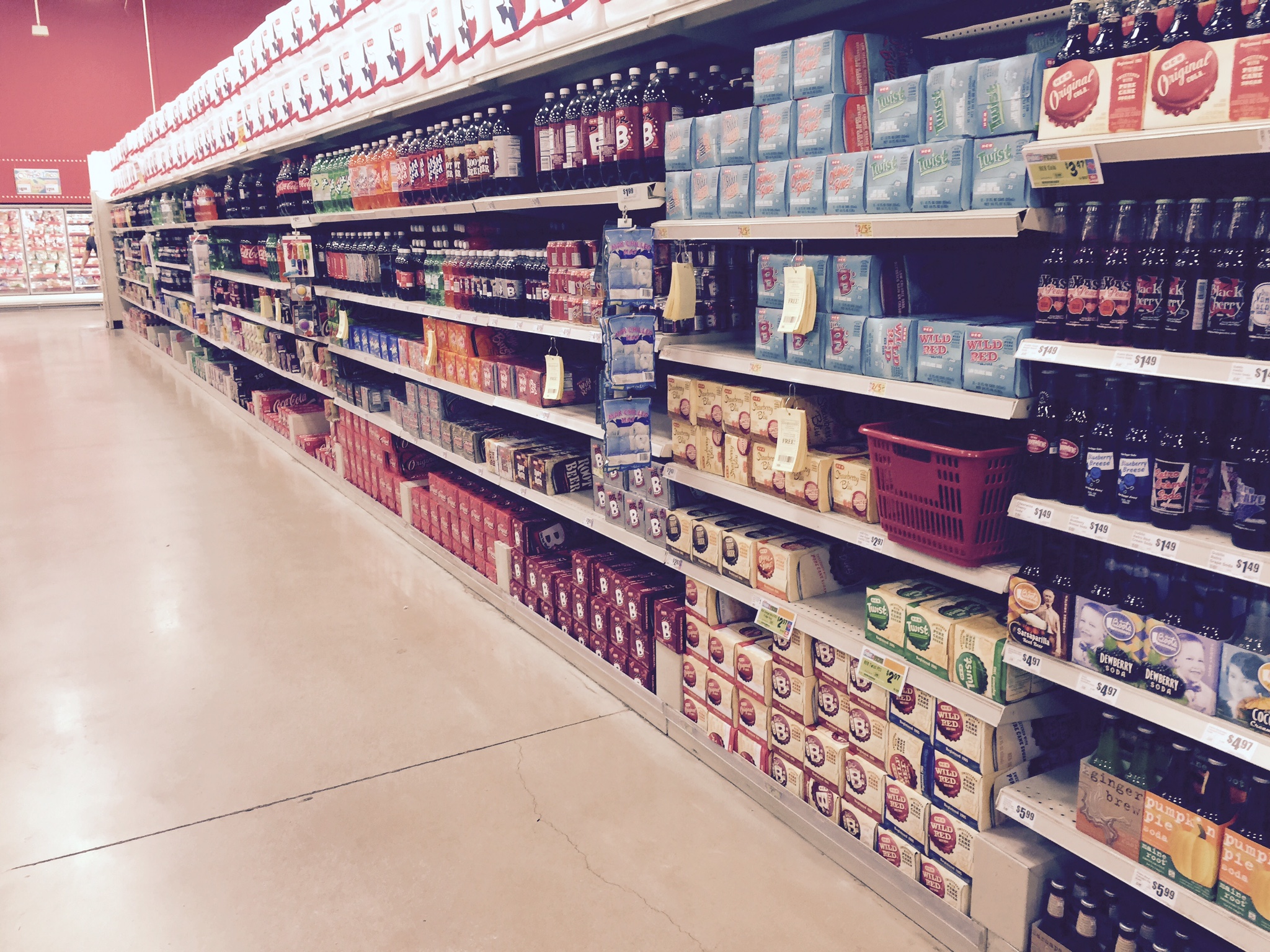Author: Mark Heckman
Most of us would agree that over the past twenty years the lion’s share of the focus and creativity within the supermarket has occurred on the perimeter of store. This is true for a number of reasons. Retailers have deliberately placed their fresh foods departments on the perimeter to be close to prep rooms and refrigeration. In addition, the majority of the store’s best deals reside on end cap displays on the back and front aisles of the store.
This all made a lot of sense until it was discovered that over time, fewer and fewer shoppers were entering the “center” area of the store and further, the categories and items found in this forgotten area were beginning to suffer from the resulting under exposure.
Consequently for the past two decades, retailers and their brand partners have frantically worked to devise new incentives to lure the shopper from their current behavior of remaining on the perimeter to venture down the long and arduous aisles of Center Store.
Some of their efforts have paid dividends, but despite new ‘intrusive” signage, fixtures and fixture configurations, Center Store is still very much under siege. While gains in Dairy, Frozen and Salty Snacks are encouraging, the majority of the remaining Center Store categories have seen sharp decreases in unit sales and in some cases as much as three to five percent over the past five years*
Further, the driving forces behind Center Store decline are largely out of the control of bricks and mortar retailers. For example;
- Smaller household sizes yield fewer stock-up trips, meaning fewer trips down the center aisles of the store.
- New Competition, in the form of smaller specialty stores, sometimes called ‘category killers’ have diluted the sales of supermarket Center Stores over the past decade, with more of this ilk of competition to come.
- Finally, shoppers have found that buying those Center Store items consumed on a regular basis such as baby products, pet food, water and beverages, paper and detergent can be conveniently purchased on-line and scheduled for home delivery.
This downward trend of Center Store performance begs several questions, chief among them is “Can Center Store survive without radical changes?’
If you believe as many do that the answer is an emphatic “NO”, then the next logical question is what should and what can be done. The transformation of Center Store should begin with an honest assessment of the factors that are attributing to its diminished shopper relevance.
From the shopper’s view, research and intuition tell us that today’s Center Store presents a number of negative issues for shoppers;
- (Configuration): Long aisles within Center Store are uninviting to shoppers as they look down the aisle from the perimeter and quickly become visually overwhelmed.
- (Item Count): Once down the aisle, there are too many items crowded into tight category sets that make it difficult find items. Variety is good, but too much variety suppresses sales.
- (Visual Clutter): Overuse of large signs, shelf tags and other point of sale materials clutter the shopper’s view even more. In an attempt to make things better for the shopper, retailers are providing a busy shopper too much to read and absorb.
- (Size): Many Center Stores simply occupy too much floor space and are counter-efficient, consuming too much of shopper’s precious time in order to find what they are looking for. ‘Bigger’ has become an albatross, rather than the panacea retailers once regarded it to be.
From the shopper’s perspective the entire physical concept of ‘Center Store” is becoming ‘unnatural’ when compared to their experiences either on-line or in smaller specialty stores.
Most deal remedial solutions for Center Store deal with making ad hoc changes to category variety, new fixtures, additional signs and of late new technology such as in-aisle digital engagement through mobile devices. Few if any however, deal with seriously re-thinking the entire concept of Center Store.
Any serious improvement to Center Store must involve the mitigating the four aforementioned negative attributes. A logical first step in that process involves a re-categorization of Center Store, from the contemporary shopper’s perspective.
The adjacent chart depicts four quadrants of Center Store items that reflect current shopper behavior and options.
- Quadrant 1: Those Top Selling items that are consumed by most of the shoppers for everyday consumption comprise a very important list of categories and items that typically comprise the retailer’s list of top 300-500 items. Sometimes referred to as the ‘Big Head’ these are the items that the shopper must have easy access to, without searching and wandering thorough the Center Store to find.
- Quadrant 2: The second category of items is really of subset of the first. This group contains Top Selling items that lend themselves to scheduled consumption. Paper Towels, Bathroom Tissue, Bottled Water, Pet Food, Diapers and others are all conducive to having their in-store inventory and space they occupy reduced as shoppers are incentivized to schedule their delivery at home or for in-store pickup (BOPIS).
- Quadrant 3: This leaves the slower moving items, which unfortunately comprise the vast majority of Center Store inventory. As opposed to the ‘Big Head’, these items comprise the ‘Long Tail’ and their presence in store should be reevaluated. Those Infrequent Selling Items that have High Affinity with Top Selling (Immediate Use) items should be retained in-store, but aggressively merchandised via secondary display with those fast-selling items they have affinity with.
- Quadrant 4: This group contains items that most food retailers stock because they believe they must carry deep variety in a particular category and have the shelf space to do so. In today’s shopper centric environment, these are the items that make viable candidates for removing from the in-store shelves, de-listing those that show little or no movement, but keeping others that have seasonal value or index higher among the retailer’s best shoppers. These slow moving ‘keepers’ would then be available via on-line or in-store kiosk purchase only.
As monumental of an endeavor as the re-categorization of the Center Store will be for bricks and mortar retailers, dealing with the size and configuration of Center Store will be even a larger challenge. Many of the leading bricks and mortar food retailers are designing and build smaller formats. Within these smaller stores, the process of re-thinking which items are kept and which are discarded is critical.
Equally vital is the determination of how items that do make the cut are arranged in the physical store.
The adjacent graphic illustrates the beginning of the re-organization of Center Store. Notice that each of the four Center Store Quadrants are contained within this layout as well as multiple opportunities for shoppers to pre-order in-store for immediate consumption or simply pick up to take home.
What is also note worthy is the placement of Top Selling-Immediate Use items positioned where shoppers can more easily access them coupled with the placement of Top Selling-Scheduled Useitems being available closer to the kiosks where they can also be ordered for regular delivery.

As opposed to long aisles with multiple categories, this approach compartmentalizes items according to their relevance to the shopper and how they would likely prioritize placing them into their shopping cart. With this approach there is no ‘racetrack’ around the store’s perimeter, but rather a natural flow from one shopping area to the next.
Perhaps the most critical aspect of this approach is the tangible merging of Center Store with On-line. While reducing inventory and clutter, the retailer offers the shopper an easy and practical means to access additional items via kiosks for either same trip pick up or delivery to the home or office.
Any approach to keeping Center Store categories viable within the bricks mortar store, must be based upon the many options of convenience shoppers available to shoppers. While very basic, this approach can provide a basis of rationale for the food retailers as they seek to reverse the decline of Center Store.
Mark Heckman
CEO, Accelerated Merchandising, LLC
2018



